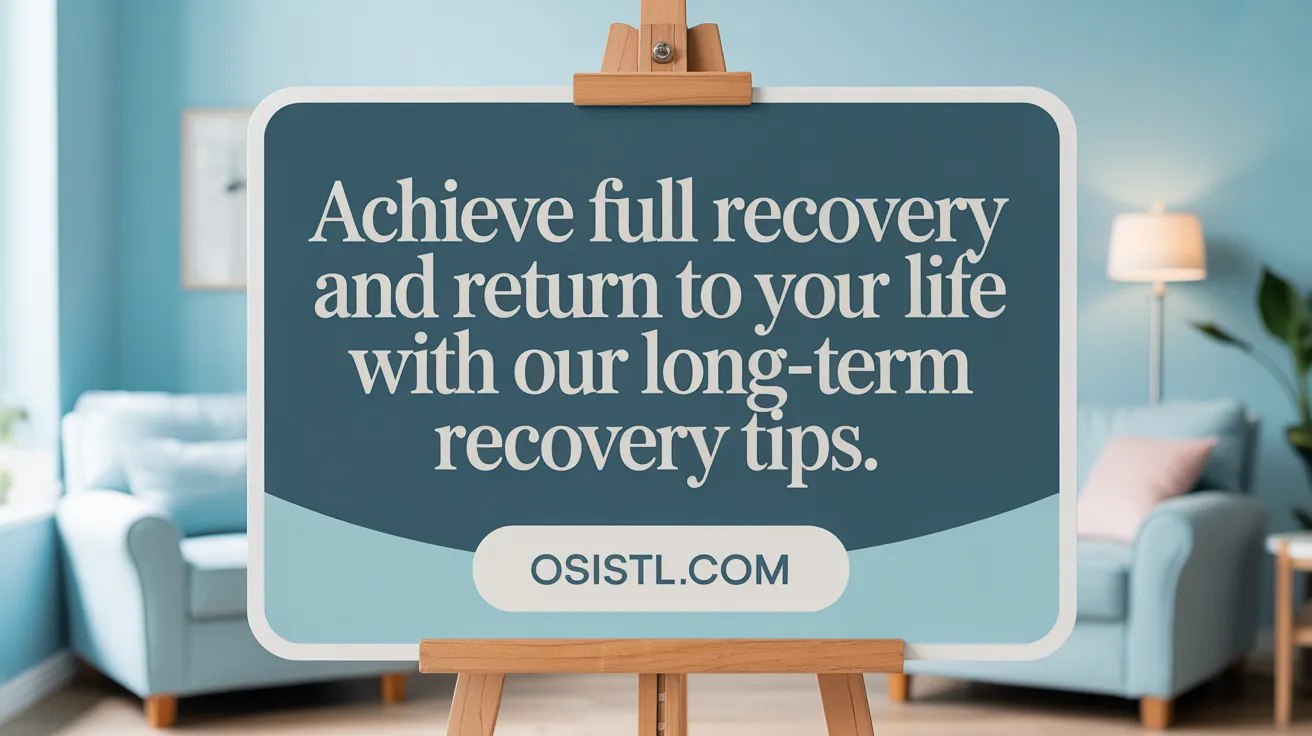Introduction to Microdiscectomy Recovery
Microdiscectomy is a commonly performed minimally invasive surgery aimed at relieving nerve pain caused by herniated discs in the lower spine. While the procedure itself is relatively quick and often outpatient, the recovery period involves careful management of activity, wound care, and rehabilitation. This article explores the typical recovery timeline, factors influencing healing, and best practices for a smooth return to daily life after microdiscectomy.
What Is Microdiscectomy and Immediate Postoperative Expectations?

What does microdiscectomy involve?
Microdiscectomy is a minimally invasive surgical procedure to remove part or all of a herniated disc in the lower spine. This disc, which presses on spinal nerves causing pain and numbness, is carefully removed to relieve the pressure. The surgery is performed through a small incision, typically 1 to 2 inches long, using a specialized microscope for precision.
How long does the surgery last and when can patients go home?
Most microdiscectomy operations last between 1 and 1.5 hours. The procedure is often done under general anesthesia and is usually an outpatient surgery. After the surgery, patients spend a few hours in the recovery area for monitoring and pain management. Many patients are able to go home the same day, highlighting the short hospital stay required.
What immediate postoperative symptoms should patients expect?
Patients commonly notice immediate or gradual relief from leg pain within days to weeks post-surgery. However, some back stiffness and soreness, and mild discomfort around the incision site are expected initially. Fatigue and sleepiness from anesthesia and pain medications can also occur during the first few days. These symptoms generally improve as healing progresses.
What immediate care is recommended?
Early walking is encouraged soon after surgery to promote circulation and reduce stiffness. Pain medications should be taken as prescribed, and incision care involves keeping the area clean and dry without removing tape or steri-strips prematurely. Patients are advised to avoid heavy lifting, bending, or twisting during the early recovery phase, and to closely follow their healthcare provider's instructions to ensure smooth healing.
Typical Recovery Timeline: Weeks 1 to 4
Initial rest and activity restrictions
During the first week after a microdiscectomy, patients are advised to rest but also encouraged to begin gentle walking within 24 hours to improve circulation and prevent complications such as pneumonia and constipation. Avoiding strenuous movements like bending, twisting, and lifting heavy objects (over about 5 pounds) is crucial. Prolonged car rides beyond 30 minutes should also be avoided for up to 2 to 4 weeks.
Incision care and hygiene
Proper care of the surgical incision helps prevent infection and supports healing. Patients should keep surgical tape or steri-strips on the wound for approximately one week. Daily washing with warm soapy water is recommended, while keeping the area clean and dry. Hydrogen peroxide, alcohol-based solutions, and baths or swimming pools should be avoided until the incision is fully healed.
Pain management
Postoperative pain usually peaks in the first few days and can be intense. Patients should take prescribed or over-the-counter pain medications exactly as directed, often after meals to reduce stomach upset. Most patients can discontinue strong pain medications within 7 to 10 days, with mild discomfort thereafter managed by NSAIDs or acetaminophen.
Introduction to walking and light activity
Early mobilization via short, frequent walks is beneficial for healing and helps maintain muscle strength. Increasing walking distance gradually is advised as tolerated. Light household activities may be resumed within this period, depending on comfort.
Avoidance of strenuous movements and heavy lifting
To protect the healing spine, patients should refrain from heavy lifting, twisting, and strenuous exercise during these initial weeks. These precautions help reduce the risk of re-injury and support optimal recovery outcomes.
Progressing Through Recovery: Weeks 4 to 8
Gradual Increase in Activity Level
During weeks 4 to 8 following a microdiscectomy, patients typically begin to increase their daily activity levels cautiously. Walking distances may be extended gradually, and light household chores or desk work can often be resumed, provided they do not cause pain or discomfort. High-impact activities and heavy lifting remain off-limits until cleared by a doctor.
Introduction of Physical Therapy
Physical therapy usually starts between 2 to 4 weeks after surgery. This rehabilitation focuses on core and back muscle strengthening, posture improvement, and teaching safe movement techniques such as proper lifting, twisting, and bending. These exercises help stabilize the spine and prevent reinjury, facilitating a smoother recovery. See more on physiotherapy after microdiscectomy.
Resumption of Light Work and Routine Activities
Many patients are able to return to light work—such as desk jobs or light household duties—by 2 to 4 weeks post-operation. Routine activities generally resume within 6 weeks. Resumption of strenuous labor, high-impact sports, or heavy lifting typically requires a longer recovery period, usually around 12 weeks or based on physician guidance. Refer to activity restrictions and returning to work after microdiscectomy.
Managing Back Stiffness and Exercises
Back stiffness and soreness remain common during this stage but tend to improve gradually. Patients are encouraged to use heat therapy away from the incision site to alleviate muscle tightness. Gentle stretching and prescribed back exercises promote flexibility and reduce discomfort, supporting long-term spine health. More details on managing back stiffness and use of heat post-microdiscectomy.
Signs of Healing and Scar Management
Scar tissue generally heals substantially within 3 to 6 weeks post-surgery. Patients should continue keeping the incision clean and dry, avoiding irritants such as alcohol or hydrogen peroxide. Regular follow-up appointments help monitor healing, and any signs of infection or complications should be promptly reported. See incision care at home and signs of infection.
Overall, weeks 4 to 8 represent an important phase where cautious activity progression, physical therapy, and proper care synergize to restore function and prepare for a return to normal life.
Longer-Term Recovery: Weeks 8 to 12 and Beyond

When do most patients achieve full recovery and return to strenuous activities?
Full recovery following a microdiscectomy usually occurs within 8 to 12 weeks after surgery. At this stage, many patients have regained sufficient strength and flexibility to resume sports, heavy lifting, and strenuous work activities. It's important that any return to high-impact or labor-intensive action be pain-free and gradual to prevent reinjury. This period marks a transition from light activity and physical therapy to more demanding physical exertion.
What ongoing care supports successful long-term recovery?
Ongoing physical therapy plays a crucial role beyond the initial recovery phase. Therapy focuses on building muscle strength, improving spinal flexibility, and enhancing posture. Regular exercises prescribed by healthcare professionals help sustain back health and prevent future problems. Additionally, maintaining good nutrition and hydration aids tissue healing. Smoking cessation is highly recommended since smoking can impair recovery. Patients are encouraged to integrate low-impact activities like walking, swimming, or yoga into their lifestyle for long-term spine support.
What signs warrant prompt medical attention during recovery?
Patients should vigilantly monitor for signs that indicate complications. These include severe or worsening pain that is not alleviated with medication, bleeding from or opening of the incision, and symptoms of infection such as redness, swelling, pus drainage, or fever. Neurological warning signs—like numbness, weakness, or loss of bladder or bowel control—require immediate medical consultation. Symptoms suggestive of blood clots, including calf pain or swelling, should also prompt urgent care.
By adhering to prescribed therapies, following lifestyle recommendations, and attending follow-up appointments, patients can optimize their long-term recovery after microdiscectomy.
Factors Influencing Recovery Duration and Quality

What medical conditions can affect recovery speed and outcome?
Certain health conditions, notably diabetes, play a significant role in recovery after microdiscectomy. Diabetes has been shown to delay motor recovery and extend healing times. Patients presenting with complete initial motor deficits or a prolonged duration of symptoms tend to experience slower or incomplete recovery. These factors underscore the importance of individual patient health status in predicting recovery trajectories.
How do advances in surgical technique impact recovery?
Recent improvements in surgical methods, particularly minimally invasive microdiscectomy techniques, have greatly influenced recovery outcomes. These advances typically mean shorter surgery durations, less muscle and tissue disruption, reduced postoperative pain, and fewer complications. Collectively, these benefits lead to a quicker, less painful recovery process with more favorable outcomes for patients.
What behaviors influence recovery success?
Patient adherence to postoperative guidelines critically affects recovery quality and speed. Following activity restrictions such as avoiding heavy lifting and strenuous movements, caring properly for the surgical incision, managing pain as prescribed, and committing to recommended physiotherapy all contribute to improved healing. Conversely, excessive physical activity, sedentary habits, poor wound hygiene, and smoking can hinder recovery and prolong discomfort.
By understanding and addressing these medical, procedural, and behavioral factors, patients and healthcare providers can work together to optimize microdiscectomy recovery.
Managing Pain and Preventing Complications During Recovery

How long does pain typically last after microdiscectomy and how is it managed?
Pain after microdiscectomy is usually most intense in the first few days to weeks. Patients often start with strong pain medications, such as opioids or NSAIDs, to manage this initial discomfort. Many are able to reduce or stop these stronger medicines by about 7 to 10 days post-surgery. After that, minor aches and soreness are typically managed with NSAIDs or muscle relaxants. Heat or cold therapy on sore muscles (avoiding the incision site) can also help relieve stiffness during recovery.
What are the common complications and their warning signs?
While complications are rare, it is important to recognize symptoms early. Possible complications include infection, bleeding, nerve damage, cerebrospinal fluid leaks, and recurrent disc herniation. Warning signs include severe or worsening pain, fever, redness or discharge at the incision site, swelling in the legs, new numbness or weakness, and loss of bladder or bowel control. If any of these symptoms appear, patients should seek immediate medical attention.
Why is follow-up care important?
Follow-up appointments, typically scheduled at 2 weeks, 6 weeks, and 3 months after surgery, are crucial. These visits allow healthcare providers to monitor wound healing, assess symptom improvement or setbacks, and guide safe progression of physical activity and rehabilitation. Early detection of complications during these visits can lead to timely treatment and better recovery outcomes. See more on importance of follow-up care.
Guidance on medication use and restrictions
Patients should take pain medicines exactly as prescribed, often with food to reduce stomach upset. Over-the-counter medicines may be used under a doctor’s advice once prescription meds are reduced. It's important not to stop medications suddenly without consulting healthcare providers. Also, certain activities such as driving should only resume when the patient is off narcotic medications and feels capable of safe operation. See Pain medicine management and Driving guidelines after microdiscectomy.
By carefully managing pain, monitoring for complications, and attending follow-up care, patients increase their chances of a smooth recovery and return to regular activities within weeks to months after microdiscectomy. For more on microdiscectomy recovery timeline, see additional resources.
Returning to Normal Life and Long-Term Spine Health After Microdiscectomy
When can patients resume normal daily activities including work and sports?
Most patients find they can resume light daily activities and return to work within 2 to 4 weeks after microdiscectomy surgery. The key to recovery is gradual and comfortable progression in activity level. For those wishing to return to more strenuous labor or contact sports, a typical recommendation is to wait about 12 weeks, provided pain has subsided and healing has progressed appropriately. This timeline allows sufficient tissue repair and muscle strengthening to protect the spine from reinjury. See more about Activity Restrictions After Lumbar Microdiscectomy and Return to Work Post-Microdiscectomy.
What lifestyle habits support long-term back health post-surgery?
Sustaining a healthy spine after surgery involves several lifestyle habits. Maintaining strong core and back muscles through tailored exercise recommendations after microdiscectomy is vital to support spinal stability. Patients are encouraged to avoid poor posture and limit prolonged sitting, which can contribute to back strain. Incorporating gentle, low-impact physical activities such as walking, swimming, or yoga not only enhances flexibility and strength but also reduces the risk of re-herniation or other spine issues. For physiotherapy related to back recovery, see Physiotherapy after Microdiscectomy.
What is the risk of herniation recurrence and how can it be minimized?
The risk of herniation recurrence after lumbar microdiscectomy is estimated to be between 10% and 15%. Larger disc defects created during surgery increase this risk. To minimize recurrence, patients should avoid heavy lifting and spinal twisting motions, especially during the early postoperative period and beyond. Adherence to prescribed rehabilitation exercises and activity guidelines can significantly reduce the chance of reherniation and promote long-term spinal health. Continuous monitoring and regular communication with healthcare providers ensure any warning signs are addressed promptly. More information on Risk and Complications of Lumbar Microdiscectomy and When to Seek Medical Help is available.
Final Thoughts on Microdiscectomy Recovery
The recovery journey after microdiscectomy typically spans about three months, encompassing stages of rest, gradual activity resumption, physical therapy, and long-term lifestyle adjustments. Patients experience significant symptom relief often within the first few weeks, with most able to return to normal daily activities by 8 to 12 weeks. Success depends on individual health, adherence to postoperative instructions, and vigilant monitoring for complications. With advances in surgical techniques and patient-centered postoperative care, microdiscectomy remains a safe and effective option for many suffering from herniated discs. Maintaining spine health through proper exercise and habits is essential to sustain recovery and overall quality of life.
